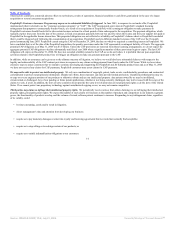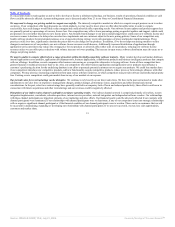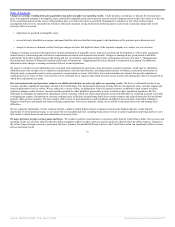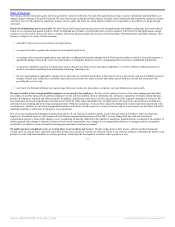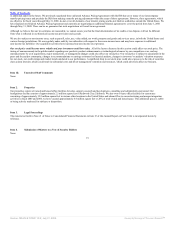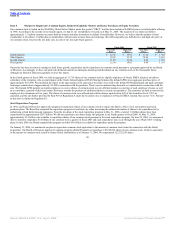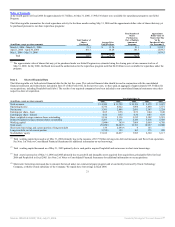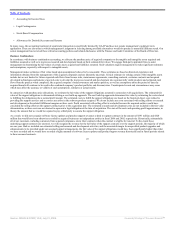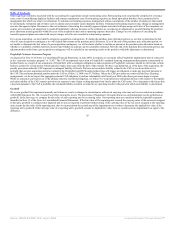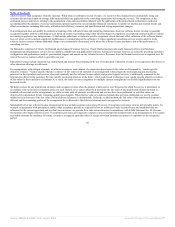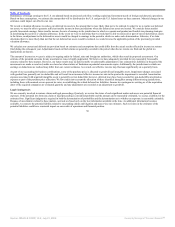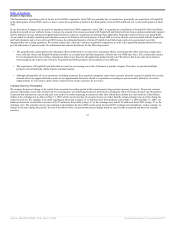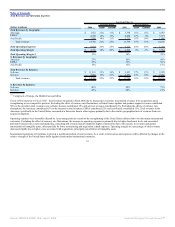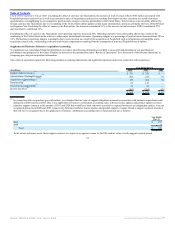Oracle 2005 Annual Report Download - page 27
Download and view the complete annual report
Please find page 27 of the 2005 Oracle annual report below. You can navigate through the pages in the report by either clicking on the pages listed below, or by using the keyword search tool below to find specific information within the annual report.
Table of Contents
Operating Margins
We continually focus on improving our operating margins by providing our customers with superior products and services as well as improving our cost structure
by hiring personnel in countries where advanced technical expertise is available at lower costs. As part of this effort, we continually evaluate our workforce and
make adjustments where we deem appropriate. When we make adjustments to our workforce, we may incur expenses associated with workforce reductions that
delay the benefit of a more efficient workforce structure, but we believe that the fundamental shift towards globalization is crucial to maintaining a long-term
competitive cost structure.
Acquisitions
An active acquisition program is an important element of our corporate strategy. In the last two years, we have paid an aggregate of $19.5 billion for our
acquisitions, which included the following:
• In January 2006, we acquired Siebel, a provider of customer relationship management software for approximately $6.1 billion. We completed the
substantial majority of our planned legal-entity mergers, information system conversions and integration of Siebel’s operations and expect to finalize all
other planned integration activities in the next three months;
• In January 2005, we acquired PeopleSoft, a provider of enterprise application software products for approximately $11.1 billion. We completed our
planned legal-entity mergers, information system conversions and integration of PeopleSoft’s operations in the first half of fiscal 2006.
We believe our recent acquisitions support our long-term strategic direction, strengthen our competitive position, particularly in the applications market, expand
our customer base and provide greater scale to increase our investment in research and development to accelerate innovation, increase stockholder value and
grow our earnings. We expect to continue to acquire companies, products, services and technologies. See Note 2 of Notes to Consolidated Financial Statements
for additional information related to our recent acquisitions.
We believe we can fund additional acquisitions with our internally available cash and marketable securities, cash generated from operations, amounts available
under our commercial paper program, additional borrowings or from the issuance of additional securities. We estimate the financial impact of any potential
acquisition with regard to earnings, operating margin, cash flow and return on invested capital targets before deciding to move forward with an acquisition.
Critical Accounting Policies and Estimates
Our consolidated financial statements are prepared in accordance with U.S. generally accepted accounting principles (GAAP). These accounting principles
require us to make certain estimates, judgments and assumptions. We believe that the estimates, judgments and assumptions upon which we rely are reasonable
based upon information available to us at the time that these estimates, judgments and assumptions are made. These estimates, judgments and assumptions can
affect the reported amounts of assets and liabilities as of the date of the financial statements as well as the reported amounts of revenues and expenses during the
periods presented. To the extent there are material differences between these estimates, judgments or assumptions and actual results, our financial statements will
be affected. The accounting policies that reflect our more significant estimates, judgments and assumptions and which we believe are the most critical to aid in
fully understanding and evaluating our reported financial results include the following:
• Business Combinations
• PeopleSoft Customer Assurance Program
• Goodwill
• Revenue Recognition
24
Source: ORACLE CORP, 10-K, July 21, 2006 Powered by Morningstar® Document Research℠


